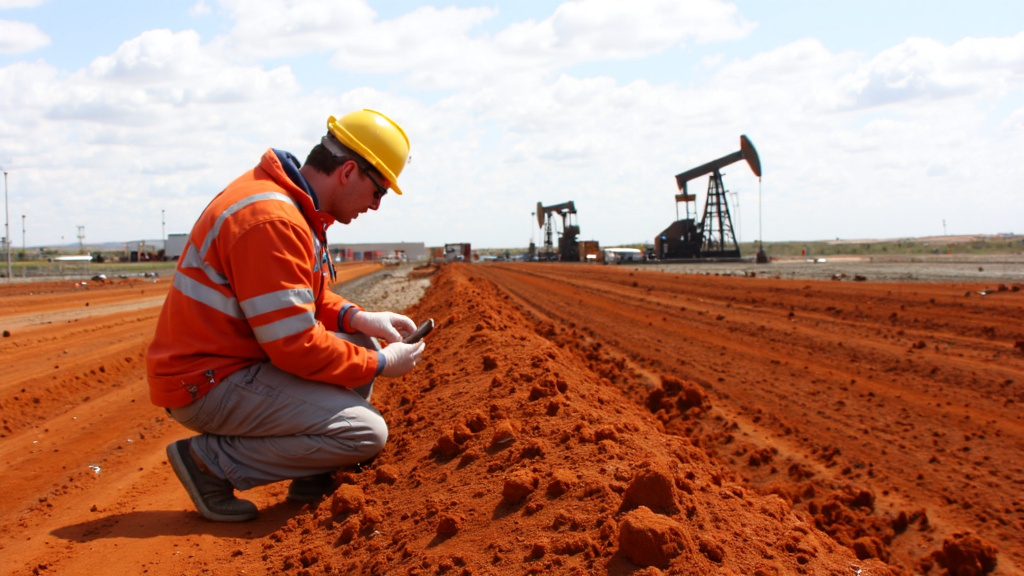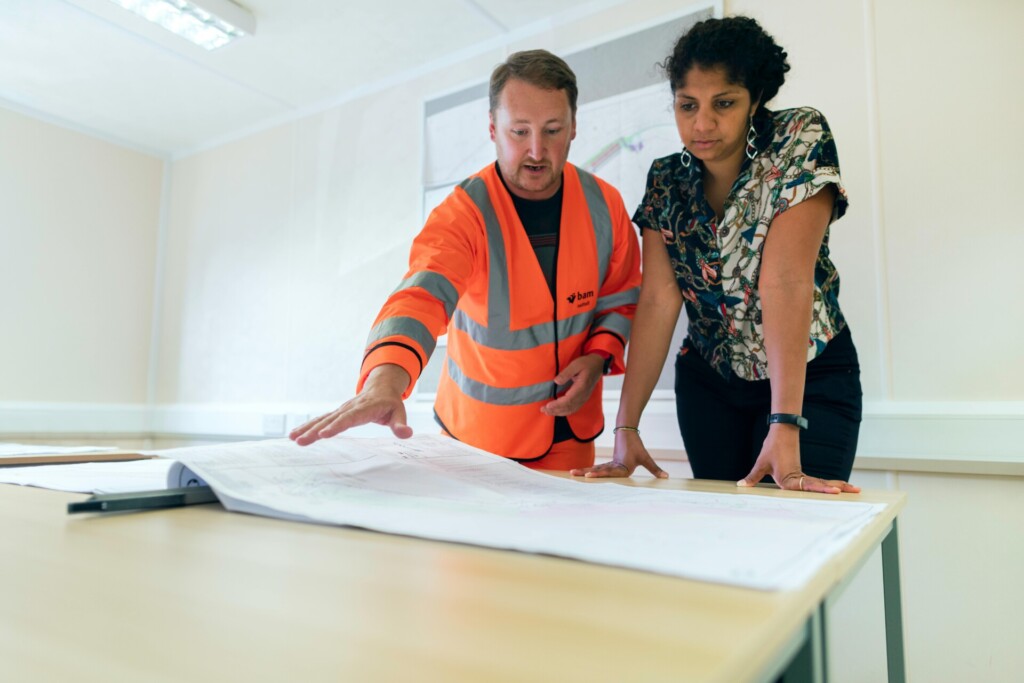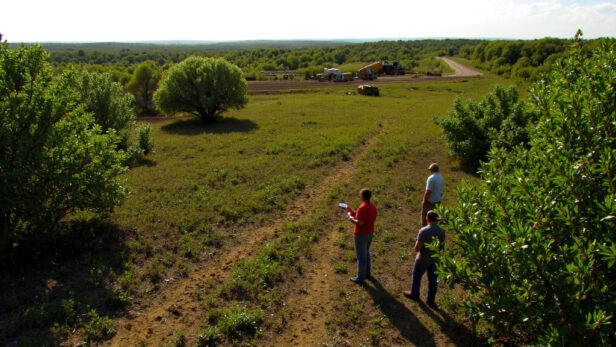Undertaking a construction project in Texas involves environmental responsibilities that extend beyond the property line. Environmental Impact Assessments (EIAs) guide us through the complex terrain of environmental regulation, helping quantify and mitigate the potential effects our construction activities might have on the surrounding ecosystem and communities.
EIAs are systematic processes that evaluate how proposed construction projects will interact with both natural and built environments. These assessments help identify potential air quality impacts, water resource concerns, soil disturbances, and effects on local wildlife habitats before construction begins. In the summer heat of 2023, this was particularly critical as drought conditions across central Texas highlighted the vulnerability of water resources during construction activities.
For developers and property owners navigating Texas’ regulatory landscape, these assessments aren’t just bureaucratic hurdles—they’re essential planning tools
What is the Purpose of Phase I Environmental Site Assessments in Texas?

Phase I Environmental Site Assessments (ESAs) are essential due diligence tools in Texas real estate transactions. These assessments identify potential environmental concerns that could pose significant financial liabilities for property buyers, lenders, or developers. The primary goal is straightforward yet crucial: to determine whether current or historical property uses have negatively impacted soil or groundwater beneath the site.
A Phase I ESA helps establish protection under the Comprehensive Environmental Response, Compensation and Liability Act (CERCLA) and the Superfund Amendments and Reauthorization Act (SARA). These federal regulations create potential cleanup liabilities for property owners—even if they didn’t cause the contamination. By conducting a thorough assessment before closing, we help clients qualify for the “Innocent Land Owner Defense,” a vital shield against future remediation costs.
Environmental Liability Protection
When performing Phase I ESAs, our environmental professionals methodically research and evaluate potential risks. This isn’t merely regulatory box-checking—it’s substantial financial protection. The assessment process reveals hidden issues that could dramatically affect property valuation and future development costs. Even cash deals benefit from this scrutiny, as environmental concerns can significantly impact investment returns regardless of financing arrangements.
The assessment process follows the ASTM E1527 standard, outlining specific protocols for identifying Recognized Environmental Conditions (RECs). We investigate common high-risk previous uses such as dry cleaning operations, gas stations, auto repair facilities, printing businesses, and manufacturing sites—all notorious for potential contamination issues in Texas properties.
Our comprehensive research includes historical property records, regulatory database reviews, interviews with knowledgeable parties, and thorough site reconnaissance. This multifaceted approach allows us to construct an accurate environmental profile of the property and surrounding areas that might impact the site.
Risk Assessment and Real Estate Value
Beyond regulatory compliance, Phase I ESAs provide critical information for accurate property valuation. Environmental concerns can substantially diminish property value and complicate financing. Based on over 25 years of experience with Texas urban properties, environmental professionals recommend Phase I assessments even for cash transactions because they function as powerful tools for evaluating true property value.
When potential environmental issues are identified during the assessment, we can provide recommendations for necessary follow-up actions. This might include additional file reviews or advancing to a Phase II Investigation involving actual sampling and testing. This tiered approach ensures clients address environmental concerns methodically and cost-effectively.
The scope of our assessments extends beyond soil and groundwater concerns to include potential vapor intrusion issues. Vapor migration from contaminated soil or groundwater can pose threats to occupants of on-site and nearby buildings. This comprehensive evaluation provides a fuller understanding of potential liabilities associated with the property.
While not strictly required by ASTM standards, we typically include observations about other common environmental concerns like suspect asbestos-containing materials, potential lead-based paint, mold growth, and possible lead in drinking water. These additional considerations provide a more complete environmental profile of the property.
| Environmental Concern | Description |
| Recognized Environmental Conditions (RECs) | Includes on-site and off-site dry cleaners, underground or aboveground storage tanks (USTs or ASTs), drums of chemicals/wastes, hydraulic lifts, landfills, waste piles, dark-stained soil, etc. |
| Vapor Encroachment Conditions (VECs) | Potential contamination from vapors migrating from contaminated soil or groundwater. |
| Common Indicators | Hazardous materials or waste, strong or odd odors, dying vegetation, unusual wildlife, warning signs or notices. |
| Potential High-Risk Uses | Historical and/or current service stations, dry cleaners using tetrachloroethene or “perc”, industrial facilities. |
Property Transaction Requirements
Phase I ESAs have become standard requirements for most Texas commercial real estate transactions. Typically, either the purchaser or the financial institution providing acquisition funding will require this assessment before proceeding. For specialized financing through government-backed programs, additional specific requirements may apply to the assessment process.
Financial institutions like Fannie Mae, Freddie Mac, the U.S. Department of Housing and Urban Development (HUD), and the Small Business Association (SBA) each maintain their own specific assessment requirements beyond the standard ASTM guidelines. We tailor our assessment approach to meet these specific criteria when clients utilize these financing vehicles.
The findings of a Phase I ESA directly influence transaction timelines and financing terms. When significant environmental concerns emerge, lenders may require additional investigations, remediation plans, or indemnification before funding. By identifying these issues early in the transaction process, we help clients avoid costly surprises and negotiation complications later.
How Does the Environmental Assessment Process Work in Texas?
The environmental assessment process in Texas is a systematic approach to evaluating project impacts. We implement this multi-stage process to ensure thorough analysis while maintaining compliance with state and federal regulations. Our teams coordinate with stakeholders at critical junctures to develop comprehensive management plans tailored to each project’s unique environmental considerations.
Key Stages of Environmental Assessment
Our process begins with establishing environmental baselines. We conduct detailed site investigations to document existing conditions, gathering accurate data on air quality, water resources, soil characteristics, and wildlife populations. This foundational information serves as our comparative benchmark throughout the assessment.
Next, we prepare a comprehensive project description that outlines the scope, timeline, and operational details. This critical documentation phase requires precise technical specifications and thorough documentation of proposed activities. The clarity of this description directly influences the accuracy of subsequent impact analysis.
Following project definition, our environmental specialists conduct impact analysis using both quantitative and qualitative methodologies. We examine potential effects on natural resources while identifying opportunities to integrate sustainable practices. This analysis phase often reveals interconnections between environmental systems that require integrated management approaches.
| Stage | Responsible Party |
|---|---|
| Initial Data Collection | Project Proponent |
| Impact Analysis | Project Proponent |
| Report Preparation | Project Proponent |
| Review and Approval | Texas Commission on Environmental Quality (TCEQ), Texas Parks and Wildlife Department (TPWD), U.S. Environmental Protection Agency (EPA) |
Stakeholder Engagement in the Process
Meaningful stakeholder engagement is a cornerstone of effective environmental assessment. We initiate early consultation with regulatory agencies, community representatives, and subject matter experts to incorporate diverse perspectives. This collaborative approach helps identify concerns before they become obstacles and builds crucial project support.
The Texas Commission on Environmental Quality (TCEQ) and Texas Parks and Wildlife Department (TPWD) serve as primary regulatory stakeholders in most assessments. We establish communication channels with these agencies early in the process to ensure alignment with regulatory expectations. Their specialized expertise helps refine our assessment methodologies and mitigation strategies.
Public participation mechanisms form another essential component of our stakeholder engagement strategy. We coordinate public hearings, information sessions, and comment periods that provide transparent access to project information. This engagement helps identify community concerns while demonstrating our commitment to responsible development practices.
Risk Assessment and Mitigation Planning
Environmental risk assessment is a critical analytical component of our process. We evaluate potential impacts using probability and consequence matrices that quantify environmental risks. This systematic approach allows us to prioritize mitigation efforts based on scientific evidence rather than subjective perceptions.
After identifying potential impacts, we develop comprehensive management plans that address both direct and indirect environmental effects. These plans incorporate specific mitigation measures, monitoring protocols, and adaptive management strategies. The flexibility built into these plans allows for responsive adjustments as project conditions evolve.
Implementation planning represents the final phase before regulatory review. We establish clear responsibilities, timelines, and performance metrics for each mitigation measure. This detailed planning ensures accountable execution while providing transparency for regulatory stakeholders monitoring compliance.
Regulatory Review and Decision-Making
Once our assessment documentation is complete, regulatory bodies conduct thorough reviews to evaluate compliance with environmental regulations. The TCEQ examines impacts on air quality and water resources, while the TPWD focuses on wildlife and habitat protection. For projects with broader implications, the U.S. Environmental Protection Agency may provide additional oversight.
The review process typically involves iterative communication between our team and regulatory agencies. We respond to information requests, clarify technical details, and sometimes modify management plans based on regulatory feedback. This collaborative approach ensures that final documents meet all statutory requirements.
Following successful review, regulatory agencies issue decisions regarding project approval. These decisions often include specific conditions that become legally binding requirements during project implementation. Our implementation teams incorporate these conditions into construction plans and operational procedures to maintain compliance throughout the project lifecycle.
What Services Are Available for Environmental Assessments in Texas?
The environmental assessment landscape in Texas offers businesses a robust network of specialized service providers. We work with these providers to address complex environmental concerns throughout project development. Our teams collaborate with organizations specializing in regulatory compliance, site assessments, and environmental permitting to ensure every project meets both regulatory requirements and sustainability goals.
Environmental Consulting and Compliance Solutions
Texas hosts numerous established environmental consulting firms ready to assist with regulatory challenges. Companies like Berg Compliance Solutions specialize in helping manufacturing operations comply with Texas Commission on Environmental Quality (TCEQ) and EPA regulations. We engage these consultants early in the planning process to identify potential environmental concerns before they impact construction timelines.
Environmental compliance services form the core of these offerings, with firms providing expertise in air quality permitting, stormwater management, and hazardous waste handling. When we develop industrial or manufacturing facilities, we partner with specialists who understand the specific environmental demands of these sectors, ensuring our clients’ operations remain compliant while minimizing operational disruptions.
Beyond basic compliance, there is growing demand for sustainability consulting services. Resource Management Associates (RMA) and similar firms offer sustainability initiatives tailored specifically to Texas regulations and environmental challenges. These services help our clients not only meet minimum requirements but also implement forward-thinking environmental practices that benefit their operations long-term.
Site Assessment and Due Diligence Services
Phase I Environmental Site Assessments represent one of the most critical services we coordinate for clients. These assessments protect property investments by identifying potential environmental liabilities before property transactions close. We work with specialized firms that conduct thorough site investigations, historical records research, and regulatory reviews to uncover potential contamination issues.
More comprehensive services include environmental audits that establish baseline compliance status for existing operations. These audits help us identify areas requiring remediation before construction begins, preventing costly delays later in the project timeline. When working with clients acquiring existing facilities, we find these audits invaluable for establishing clear environmental responsibility boundaries.
For projects with specific environmental sensitivities, we coordinate specialized assessment services like air dispersion modeling, groundwater monitoring, and ecological surveys. Firms such as TRICORD Consulting offer industry-specific expertise in air quality compliance management, which is essential for industrial projects throughout Texas.
| Company | Services | Regions Served |
|---|---|---|
| Solid Ground Environmental | Phase 1 and 2 ESAs, Wetland Delineations, Asbestos Inspections, Mold Investigation | Dallas, Houston, San Antonio, Austin, Fort Worth, El Paso, Arlington, Waco, Corpus Christi, Lubbock, Amarillo, Plano |
| CRG Texas Environmental Services | Environmental Due Diligence, Petroleum Storage Tank Services, Environmental Remediation Services | All over Texas |
| Austin Environmental Solutions | Environmental Site Assessments | Texas |
Industry-Specific Environmental Solutions
The diversity of Texas industries demands equally diverse environmental assessment capabilities. We work with consultants offering tailored services for energy, manufacturing, and commercial development sectors. These specialists understand the unique challenges each industry faces regarding environmental compliance.
Energy sector projects often require specialized environmental assessments related to emissions, waste management, and resource utilization. Firms like NT Global focus on environmental solutions specifically for energy industry operations, helping our clients reduce liabilities and minimize environmental costs throughout project development and ongoing operations.
For manufacturing facilities, we engage consultants with deep expertise in industrial environmental management. These specialists assist with TCEQ permitting, emissions monitoring, and waste classification—critical services for maintaining operational compliance. Our construction teams work closely with these experts to integrate environmental controls and monitoring equipment during the build phase.
Commercial and institutional development projects benefit from assessment services focused on sustainable site development, stormwater management, and energy efficiency. We coordinate with consulting teams that understand how environmental assessment findings translate into practical construction requirements, ensuring smooth implementation of recommended measures.
Specialized Technical Environmental Services
Beyond standard assessments, we regularly coordinate specialized technical services to address specific environmental concerns. These include NPDES industrial stormwater permitting assistance, SPCC (Spill Prevention, Control, and Countermeasure) plan development, and toxic release inventory reporting support. These technical services ensure our clients meet specific regulatory requirements applicable to their operations.
For projects requiring ongoing environmental management, we can implement environmental management systems (EMS) that help track compliance requirements, permitting deadlines, and reporting obligations. These systems provide a structured approach to managing environmental responsibilities throughout facility operations, extending well beyond the construction phase.
Training services represent another valuable environmental assessment offering. Many regulations require annual environmental training for staff involved in regulated activities. We connect clients with providers offering NPDES stormwater training, hazardous materials management instruction, and other compliance-focused educational programs that support long-term operational compliance.
What Are Key Components of Effective Environmental Impact Assessments?
Environmental Impact Assessments (EIAs) are essential tools in our construction planning process. When executed properly, these assessments help identify potential environmental consequences before construction begins, allowing for proactive mitigation strategies that benefit both the project and surrounding ecosystems.
Core Components for Assessment Effectiveness
At EB3 Construction, we have found that effective EIAs consistently incorporate several foundational elements. Transparency forms the bedrock of any credible assessment—we ensure all stakeholders can access and understand our methodology and findings. This openness builds trust with regulatory bodies and communities alike, especially in today’s climate of heightened environmental scrutiny.
Certainty and consistency in our approach provide reliable frameworks that developers and property owners can depend on. When clients understand what to expect from the assessment process, we eliminate surprises that could derail timelines or budgets—an important consideration with California’s increasingly stringent environmental regulations.
Meaningful participation is another crucial component. We actively engage stakeholders throughout the assessment process, from initial scoping to final review. This collaborative approach not only fulfills regulatory requirements but often reveals site-specific insights that technical analysis alone might miss. Local knowledge frequently proves invaluable when identifying sensitive ecological areas or community concerns.
Practical Application in Construction Settings
Practicality and flexibility determine whether an EIA truly serves its purpose or merely checks regulatory boxes. We tailor our assessments to match each project’s scope and environmental context. A small urban infill development requires a different approach than a large-scale mixed-use project near sensitive wetlands—our methodology scales accordingly while maintaining thoroughness.
Cost-effectiveness doesn’t mean cutting corners. Instead, we focus resources on the most significant potential impacts while streamlining analysis of negligible concerns. This balanced approach ensures compliance without unnecessary delays or expenses—a priority for our developer clients working with tight construction schedules.
Accountability and credibility emerge from rigorous methodology and documentation. Our assessment reports include clear impact predictions, specific mitigation recommendations, and monitoring protocols that can be verified through objective measures. Regulatory agencies and community stakeholders recognize when an assessment meets professional standards versus superficial analysis.
Assessment Tools and Methodologies
The technical backbone of effective EIAs relies on specialized tools that have evolved significantly in recent years. Geographic Information Systems (GIS) allow us to layer multiple environmental datasets—from groundwater tables to habitat corridors—creating comprehensive spatial analysis of potential impacts. This technology helps us identify concerns that might be missed in conventional assessments.
Predictive modeling has transformed our ability to forecast environmental consequences. From stormwater runoff patterns to air quality effects, sophisticated models help quantify impacts before they occur. These tools prove particularly valuable when explaining complex environmental interactions to project stakeholders and regulatory agencies.
Checklists and matrices provide structured approaches to identifying potential environmental impacts across multiple categories. We systematically evaluate interactions between construction activities and environmental components, assigning significance scores based on magnitude and duration. This methodical process ensures comprehensive coverage of all potential concerns.
When conducting field assessments, we employ collaborative analysis methods that bring together environmental specialists, construction experts, and local stakeholders. This multidisciplinary approach yields more robust evaluations than siloed analyses, particularly for complex sites with overlapping ecological and community considerations.
Integration with Construction Planning
The most effective EIAs don’t exist in isolation—they integrate seamlessly with the construction planning process. We incorporate assessment findings into our feasibility studies, site preparation strategies, and construction scheduling. Environmental considerations become woven into the project’s DNA rather than treated as regulatory hurdles to overcome.
Early integration of EIA findings often leads to design modifications that both improve environmental outcomes and reduce construction complications. Adjusting building footprints to preserve significant trees, for instance, can simultaneously satisfy environmental requirements and create marketable green space amenities. This proactive approach transforms potential constraints into project enhancements.
Monitoring protocols established during the EIA provide valuable frameworks for construction oversight. By tracking key environmental indicators throughout the building process, we can verify that mitigation measures are functioning as intended and make real-time adjustments if necessary. This adaptive management approach has proven invaluable on sites with sensitive environmental features.
Through thoughtful application of these key components, we develop Environmental Impact Assessments that not only satisfy regulatory requirements but genuinely improve project outcomes. By identifying potential issues early and integrating solutions into our construction planning, we deliver developments that balance environmental responsibility with practical buildability—a hallmark of our approach at EB3 Construction.
Conclusion: The Value of Environmental Impact Assessments in Texas Development

Environmental Impact Assessments are crucial safeguards in Texas’s development ecosystem. These comprehensive evaluations serve as vital risk management tools that protect both development interests and natural resources. By identifying potential environmental consequences before construction begins, we help our clients navigate complex compliance requirements while preserving the ecological integrity that makes Texas unique.
The true value of these assessments lies in their ability to turn potential obstacles into opportunities. Conducting thorough environmental reviews early in the development process paves the way for sustainable construction practices that balance economic growth with environmental stewardship. This proactive approach not only prevents costly delays and regulatory penalties but also enhances project outcomes through improved design, reduced resource consumption, and strengthened community relations. As construction professionals committed to responsible development, we understand that environmental assessments are about building better projects.
Ready to ensure your next development project meets environmental compliance while maximizing its potential? Contact EB3 Construction for comprehensive environmental assessment coordination.




